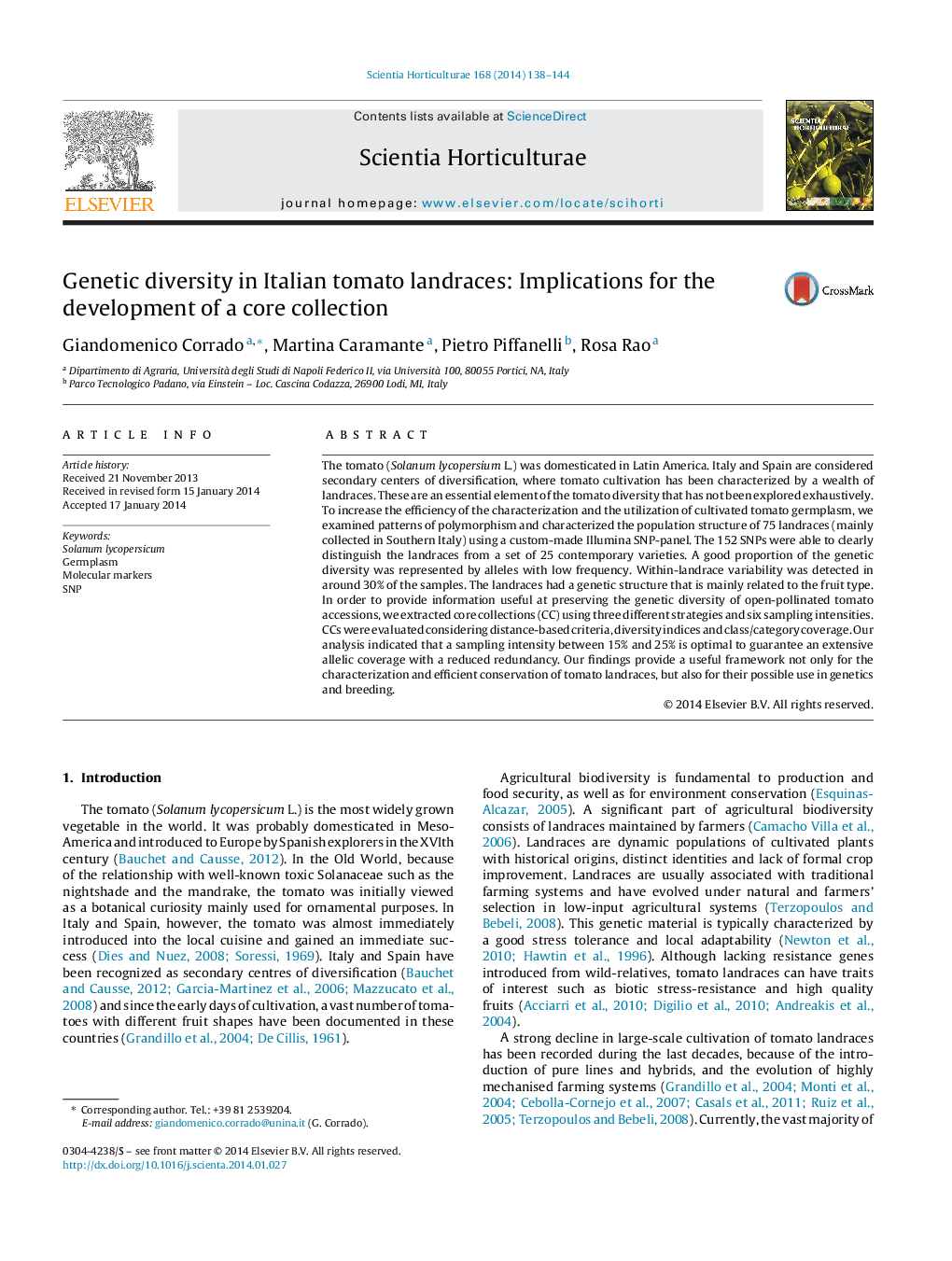| Article ID | Journal | Published Year | Pages | File Type |
|---|---|---|---|---|
| 4566903 | Scientia Horticulturae | 2014 | 7 Pages |
•We genotyped 75 tomato landraces and 25 contemporary varieties with an Illumina panel.•The 152 SNPs employed were able to clearly differentiate landraces from varieties.•Landraces have a lower allelic richness and a higher number of low frequency alleles.•Within-landraces variability was detected in around 30% of the accessions.•A 15–25% sampling intensity is the most suitable to build a core collection.
The tomato (Solanum lycopersium L.) was domesticated in Latin America. Italy and Spain are considered secondary centers of diversification, where tomato cultivation has been characterized by a wealth of landraces. These are an essential element of the tomato diversity that has not been explored exhaustively. To increase the efficiency of the characterization and the utilization of cultivated tomato germplasm, we examined patterns of polymorphism and characterized the population structure of 75 landraces (mainly collected in Southern Italy) using a custom-made Illumina SNP-panel. The 152 SNPs were able to clearly distinguish the landraces from a set of 25 contemporary varieties. A good proportion of the genetic diversity was represented by alleles with low frequency. Within-landrace variability was detected in around 30% of the samples. The landraces had a genetic structure that is mainly related to the fruit type. In order to provide information useful at preserving the genetic diversity of open-pollinated tomato accessions, we extracted core collections (CC) using three different strategies and six sampling intensities. CCs were evaluated considering distance-based criteria, diversity indices and class/category coverage. Our analysis indicated that a sampling intensity between 15% and 25% is optimal to guarantee an extensive allelic coverage with a reduced redundancy. Our findings provide a useful framework not only for the characterization and efficient conservation of tomato landraces, but also for their possible use in genetics and breeding.
